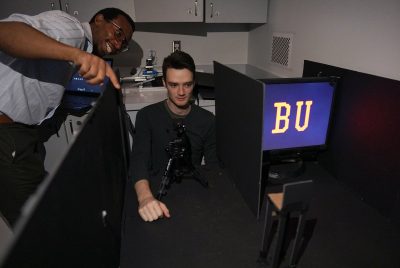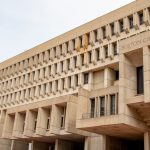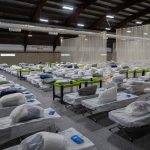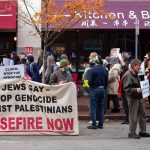
By Andy Vo and Susannah Sudborough
A team of three electrical engineers led by College of Engineering associate professor Vivek Goyal is in the process of creating a camera that can look around corners.
Goyal and his team, research assistant and postdoctoral fellow John Murray-Bruce and doctorate candidate Charles Saunders, developed and published a method for cameras to see around corners using a simple digital camera with custom-built algorithms that was published in the scientific journal, “Nature.”
Goyal has been working on the project since 2016, when it was first funded by the Defense Advanced Research Projects Agency.
He said there are many applications for the research.
“We’re one of several teams funded to develop techniques for non-line-of-site imaging,” he said. “The potential ‘techie’ applications include things like search and rescue and surveillance and perhaps to enable things like autonomous vehicles to build maps of the surroundings that extend beyond only the areas for which there’s direct line of sight.”
Although he isn’t sure about what’s next for his research team, Goyal said he hopes to continue to improve his technology.
“You uncover new questions with every question that you answer,” he said. “There are certainly things we can do to improve upon what we’ve done already and some of those we’ll pursue.”
Goyal said that having his research published helps when trying to figure out next steps.
“The great thing about publishing your research is when enough people care about your published research, you can feel like they will build upon it and take it further than you would take it yourself,” he said.
Saunders wrote in an email that the advances of technology in the “area of non-line-of-sight” photography, which began around 2009, inspired their work.
Saunders also wrote that the technology they are developing can in the future be applied to various sorts of camera devices, including common digital cameras.
According to Saunders, the technology is mostly regulated to working in a reasonably restricted laboratory setting.
“In the future, we hope it could be used to improve safe[ty] for first responders in search-and-rescue missions,” Saunders wrote, “or perhaps allow autonomous vehicles to see potential hazards out of the direct line-of-sight.”
According to Murray-Bruce, the algorithm is based on the knowledge of how light behaves.
“If you have played around with laser pointers, they travel in a straight line,” Saunders said. “Most other light sources don’t have that property. If you have a light bulb, the light goes almost uniformly in every direction. We can kind of describe that mathematically and this knowledge is part of our algorithm.”
Ben Steinfeld, a freshman in ENG, said he thinks that BU professors taking part in and receiving recognition for their research is good for the university.
“It says it’s a good research university, and we’re high profile,” Steinfield said.
Rahul Dheirani, a junior in the College of Arts and Sciences, said he thought the research was “amazing.”
“Boston University is already one of the schools that has all of these professors working on different research,” Dheirani said. “So it isn’t really surprising. It’s a nice thing to be validated and have a professor recognized. The more professors that are recognized for their work, the better for the university.”
Caroline Banfi, a freshman in CAS, said she wasn’t surprised that a BU researcher was receiving recognition.
“BU puts a lot of effort into making sure they have professors doing research that’s going to be relevant,” she said. “STEM is just such a fast-running field and it’s really relevant, a lot of students come to BU for that field as a major, so I think the fact that they put money into that is good.”
This is an account occasionally used by the Daily Free Press editors for posts with multiple authors or otherwise for special circumstance publications. See authorship info on the byline at the top of the page.




